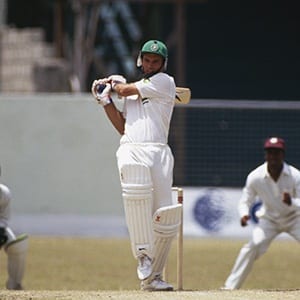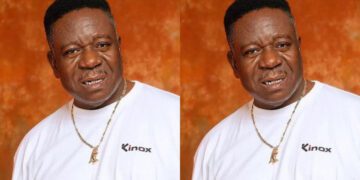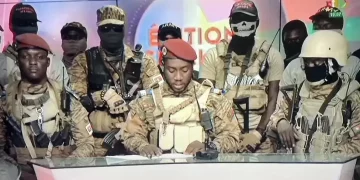[ad_1]

Red carpet? Well no … there really, really wasn’t much of that at the outset.
I remember a certain, involuntary shiver even as the wheels hit the tarmac at Norman Manley International Airport, Kingston, before any prospect of a tangible, perhaps lavish (not, it soon proved) welcome at the terminal.
The South African team, the accompanying SA under-19 squad and a corps of press and few dozen supporters, after all, were arriving in 1992 on an SAA Boeing 747 – the “Johannesburg” – still two years ahead of democratic elections and with the plane stubbornly in the conspicuous orange, white and blue livery symbolising the apartheid regime.
And this was Jamaica, steamy, edgy, politically quite militant island nation only some 400km to the south of Cuba, land of Fidel Castro and more at odds than most countries with the minority government at the tip of Africa.
The flight was actually a scheduled one, I recall, from then-Jan Smuts Airport to New York, with American-bound passengers bemused, or in some cases nose-out-of-joint, about this pretty massive detour to drop off an excited, but also slightly nervous contingent of sportspeople and their disciples on terrain never before explored by an SAA aircraft.
Guinea pigs? Crash-test dummies?
Those thoughts crossed my mind after the less than tumultuous airport reception.
It was a situation only heightened when we were transported in a convoy of buses, surrounded by wailing sirens and military and police vehicles (possibly more for protection than because of any “state-visit” sort of reverence, I contemplated) and as a fairly significant number of pedestrians on the cluttered, slow route to the Pegasus Hotel were offering time-honoured forms of hostile sign language with their fingers in our general direction.
Uh-oh.
Was this mission, this seemingly well-intended bid to get poignantly bedded down against a black cricketing powerhouse (three ODIs, one isolation-ending Test match) happening just a tad too early? With the wounds of South Africa’s infamous heritage still too bare to Caribbean people?
Jamaican prime minister PJ Patterson had hardly lessened the sense of unease by reminding senior SA cricket administrators that “we were only persuaded at the last moment to go along with this visit … because of the position taken by (Nelson) Mandela and the ANC … it has not received uniform acclaim”.
One thing you could generally not accuse then-United Cricket Board of South Africa supremo Ali Bacher of, was a lack of awareness to potentially sticky situations, and within days (hours?) he had made of use of his contacts high up in the now-unbanned, increasingly influential African National Congress to ensure a smoother acceptance and passage on the three-island adventure, later to take in Trinidad and Barbados as well.
That action involved the hasty flying-in of Tebogo Mafole, then the ANC’s representative at the United Nations in New York, to give the required validation, the liberation movement’s unreserved thumbs-up.
Fairly quickly and with the personable Mafole quite vitally to the fore, Jamaicans’ reservations about the first-time SA tour began to ease, even as a certain awkwardness undoubtedly remained around the demographic makeup at the time of the senior squad under Kepler Wessels’s hard-jawed leadership.
It was all-white, save for the presence of an already 40-year-old left-arm spinner Omar Henry, although a shrewd face-saver of sorts had been the rather more representative U19 squad, featuring such players as Herschelle Gibbs, Lulama Masikazana, Dale Benkenstein, Freeman Simelela, Craig Haupt and Morgan Mfobo.
The cricketing details of the relatively short tour — unforgettable though they were too — have been well-documented so I won’t dwell for too long on them here.
South Africa’s still naïve approach to ODIs was there for all to see in a 0-3 thumping (once beneath a heady haze of ganja at Kingston’s Sabina Park, twice in two days at Queen’s Park Oval in Port-of-Spain) although, in fairness, acclimatisation play had amounted to a fat zero for the tourists in the hastily-convened safari.
The strapping Phil Simmons and more nimble-footed, majestic Brian Lara were routinely to the fore at the crease in the relative rout, which seemed an ominous harbinger for the blue-chip, single Test match to follow at Kensington Oval in Bridgetown – South Africa’s poignant first since 1970, and the primary reason for being there.
But we all know, too, that South Africa rose to the five-day occasion in rousing fashion against a Windies side only just coming down a rung or two at the time from their awe-inspiring heyday of the late 1970s and full 1980s — largely bossing the first four days before what I described in my main, post-match newspaper article for the then-Argus Group as “Hurricanes Curtly (Ambrose) and Courtney (Walsh)” sent their once-sterling foundations to the ground in a cloud of pace-fury dust.
The towering strike bowlers accounted for all 10 wickets between them as their previously so gritty foes slumped on day five from an overnight 122 for two — in pursuit of only 201 for a fairy-tale triumph – to 148 all out.
With apologies to Leadbelly and Johnny Cash, it was “Goodnight, Irene”.
On the subject of the brooding Ambrose, he was the focus of perhaps my biggest mistake on the tour: an audacious attempt to chat to the legendary figure — known to be notoriously media-averse at the time — while he was immersed in a pinball machine in a Bridgetown hotel ahead of the Test.
The depth of the scowl I received in return simply required no words (though perhaps, I comforted myself in retrospect, he just didn’t like being disturbed while playing pinball).
More broadly, though, I found distinguished West Indies cricket personalities while on the venture, whether past or present, unbelievably affable toward the overwhelmingly white people from a still rather knife-edged South Africa visiting their varying, sun-soaked home shores.
The hallmark got progressively more noticeable as the tour progressed from Jamaica, onward to the noticeably more laidback climes of Trinidad and finally Barbados.
Premier icons like Sir Wes Hall and Sir Garfield Sobers were bastions of charm, openers of doors to sometimes swanky cocktail parties for almost the entire touring contingent including supporters, and showed fascinated interest in the for-so-long-pariah South African game.
Meanwhile the Windies’ captain of the time, Richie Richardson, most thoroughly exploded – at least by my reckoning – an unfortunate myth I had been fed before departure from South Africa.
A sports editor within the Argus Group had warned me sombrely that Richardson was “anti-white” … not something I had heard before, and perhaps a lamentable reflection of racial paranoias and prejudices that still very much existed in our polarised society then.
It proved so wide of the mark as to prove farcical: the dashing right-handed batsman was warm and forthcoming to the SA media handful virtually throughout the tour, and I even remember one occasion where yours truly and veteran Ray Williams of the former SAPA were ushered into the very sanctuary of the West Indies’ dressing room – a place of some formidable physical specimens, let me tell you – for an impromptu chat with the agreeably mellow skipper.
This just seemed such a tangible act of acceptance.
A long-time lover of dub/reggae, two musical memories are among my many, lingering standouts of the tour because of their later relevance.
One was of the then-teenaged but already mischievous-streaked Gibbs, while in the bus back from the U19s’ game in Spanish Town to Kingston, dancing lustily in the back row to the strains of a song where the primary lyrics involved “leave de drugs, leave de drugs, leave de drugs alone”.
Nine years later he would be among, of course, five SA players (the others Justin Kemp, Roger Telemachus, Paul Adams and Andre Nel) fined R10,000 each by the then-UCB for smoking marijuana after a series-clinching Test win over West Indies in Antigua.
Later in the tour, on the famously rowdy night on the Bajan Queen party boat attended by both teams and entourages preceding the rest day in the Bridgetown Test match, the emerging but later deeply troubled Hansie Cronje boogied with a special gusto – and that’s not an exaggeration, I swear – to the soca hit of the time “One cent, five cent, ten cent, dollar”.
Apart from the initial (though gradually lifting) tension in Jamaica, there were other butterflies-inducing moments on the venture: like the time both teams and travelling press had to turn back to Kingston on the first attempt to fly out to the Trinidadian capital of Port-of-Spain.
“We gotta red light in the cockpit,” frankly confessed the pilot of the now non-existent British West Indies Airways (BWIA) jet, which had already seemed a disconcerting throwback to the late 1960s or thereabouts (tourists in the Caribbean were apparently not averse to branding BWIA “But Will it Arrive?”).
A twitchy-bum phenomenon quickly enveloped even some of the toughest competitors in the respective team ranks, although we did get back safely to point of departure and then took off anew, without further incident, after a bit of tinkering on the ground and the affable pilot’s only moderately reassuring “OK, we gonna try again”.
Another briefly hairy moment was when the Mini Moke (a small, recreational convertible not substantially different to a golf buggy) hired in Barbados by the Argus Group trio – also made up of photographer John Hogg and special writer Shaun Johnson, the latter sadly recently deceased – slewed across the slightly rural road to a sudden halt after a tyre burst.
We had had that larger-than-life SABC commentator Trevor Quirk as a back-seat passenger, probably en route to a thoughtful bash at the beach house of legendary West Indies microphone icon and writer Tony Cozier, and I still suspect Quirky shifted just a little too much ballast onto that particular wheel ahead of the “pop”: he then insisted on trying to change the tyre with spanner in one hand and Banks Beer resolutely still glued to the other.
That barrier-busting trip, albeit of short duration and as if completed in a whirlwind, truly was a belter, an eye-opener.
In my very modest way, I had felt a part of history, privileged and humbled.
Those Caribbean memories of ’92? Utterly indelible.
*Follow our chief writer on Twitter: @RobHouwing

















